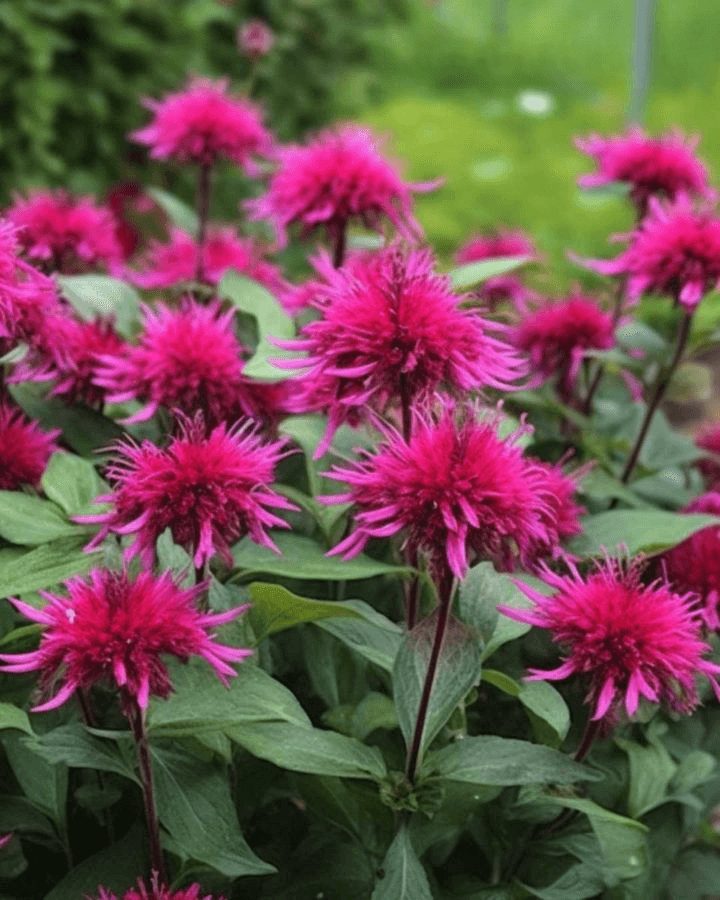As environmental challenges continue to grow and bee populations decline, many people are looking for meaningful ways to help the planet. One simple, effective action is planting bee balm (Monarda spp.) in your backyard. Not only does this vibrant plant add beauty to your outdoor space, but it also supports pollinators and contributes to the health of your local ecosystem.
Bee Balm’s Visual Appeal
Commonly referred to as wild bergamot or Oswego tea, bee balm is a member of the mint family (Lamiaceae) known for its striking appearance. Its blossoms burst in vivid hues of red, pink, and purple, creating a dramatic visual impact in any garden. The blooms form in tight, tubular clusters that are as appealing to pollinators as they are to garden enthusiasts.
A Magnet for Pollinators
One of the top reasons to grow bee balm is its remarkable ability to draw in pollinators. Bees, butterflies, hummingbirds, and other essential insects are naturally attracted to its nectar-rich flowers. As these creatures move from bloom to bloom collecting nectar, they help fertilize plants by transferring pollen. This natural pollination process is vital to the production of many fruits and vegetables, benefiting both home gardeners and the agricultural world.
Boosting Biodiversity
By incorporating bee balm into your garden, you actively promote biodiversity. The presence of pollinators increases the reproduction rate of surrounding plants, leading to a more varied and healthier plant population. In turn, this supports a diverse range of animal life, contributing to a well-balanced and thriving ecosystem.
Easy to Grow and Maintain
One of bee balm’s best qualities is how little maintenance it requires. It adapts well to various growing conditions, from sunny locations to areas with partial shade. While it prefers well-drained soil, it can tolerate different soil types. Once established, it needs minimal watering, making it a great option for gardeners who want attractive results without high maintenance.
Edible and Medicinal Benefits
Bee balm isn’t just good for nature—it’s useful to people, too. Certain varieties can be used to make herbal tea with a refreshing flavor similar to mint and citrus. This tea is not only enjoyable but has been traditionally used to relieve digestive discomfort and reduce stress.
Your Step-by-Step Guide to Growing Bee Balm
Ready to bring bee balm into your garden? Here’s a straightforward guide to help you succeed.
1. Pick the Right Spot
Find a location that gets around 4–6 hours of sun each day. While bee balm can grow in partial shade, full sun encourages more abundant blooms. Avoid planting it in areas that are heavily shaded by larger plants.
2. Prepare the Soil
This plant thrives in well-drained, nutrient-rich soil. If your soil is dense or clay-heavy, work in some compost or aged manure to improve texture and drainage. Once your plants are settled in, apply mulch to help retain moisture and minimize weed growth.
3. Choose a Variety That Fits Your Space
There are many types of bee balm to choose from, each offering different colors and growth habits. Select one that complements your garden’s look and environment. Popular choices include Monarda didyma (scarlet bee balm), Monarda fistulosa (wild bergamot), and Monarda citriodora (lemon bee balm).
4. Plant Your Bee Balm
a. From Seed: Start seeds indoors 6–8 weeks before your area’s last frost. Press seeds lightly into the soil without covering them, and keep the mix evenly moist. Once seedlings have a few sets of leaves, you can move them outdoors after the final frost.
b. From Transplants: If you prefer a faster start, buy young plants from a nursery. Transplant them outdoors after the danger of frost has passed. Space the plants about 18 to 24 inches apart, depending on the variety.
5. Watering and Ongoing Care
a. New Plants: Keep the soil moist while plants are establishing roots. Water in the morning so that excess moisture evaporates, helping prevent disease.
b. Mature Plants: Once bee balm is settled in, it requires little watering except during dry spells. Avoid overwatering, as soggy soil can lead to root issues.
6. Pruning and Deadheading
Removing faded blooms encourages more flowers and keeps your plant looking tidy. It also channels the plant’s energy into new growth. In early spring or late fall, cut back stems to a few inches above the ground to support fresh, healthy growth the next season.
7. Divide Every Few Years
To keep your bee balm vigorous, divide the plants every three to four years. Dig up the clump and gently split it into smaller pieces, making sure each section has roots. Replant the divisions at the same depth as before.
8. Enjoy the Show
As your bee balm grows, spend time observing the pollinators it attracts. Bees, butterflies, and hummingbirds will bring your garden to life. Watching them work offers a deeper appreciation for nature’s delicate balance and the important role your garden plays in it.
